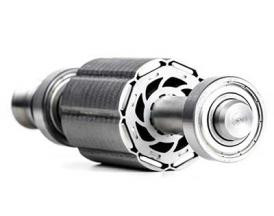Method to Glue Neodymium Magnets?
Neodymium magnets are strong magnets used in a variety of applications. Most of the magnets purchased in stock are nickel plated. Nickel is an excellent choice for magnetic protection because it is highly resistant to attack by corrosive substances. Unfortunately, the same fine properties of nickel that make it ideal for magnetic protection make it difficult for the adhesive to chemically bond to the substrate. In addition, the nickel plating process creates a very smooth and hard surface, which further reduces the adhesive's ability to form a satisfactory bond with the metal.
When using standard neodymium magnets, the types of glue that actually work are very limited. The best option is two-part epoxy. This adhesive mixes before use and creates its own chemical reaction to attach the magnet to other objects.
Before attempting to glue neodymium magnets, you should take the time to prepare the surface so that it will interact with the glue and create the best possible bond. Start by cleaning and degrease the nickel-plated surface. This requires the use of an industrial solvent degreaser. Household remedies and alcohol do not have the cleaning power to effectively clean magnets and prepare them for sticking. Once the grease is removed, use 200 grit sandpaper to wipe the surface.
The goal is to create a surface with sufficient texture to adhere the glue without breaking the nickel, which can corrode the magnet. After sanding the surface, clean and degrease a second time. To test the preparation, add a few drops of water. If water is sprayed to wet the surface and it doesn't form, then the adhesive is ready to pick up and form a strong bond. Be sure to allow the surface to dry before mixing the glue and trying to attach a magnet to the surface.
The surface to which the Permanent magnets will be attached must also be prepared to accept the magnet. Also, make sure it is free of oil, dust, or other contaminants. Even if the surface is very smooth like a nickel-plated neodymium magnet, it may need additional grinding.
Mix the epoxy according to package directions. The hardener and adhesive are usually mixed in equal parts. Mix only the amount of glue that will work for a short time. Apply it to the magnet and stick it to the surface. Tighten to dry if necessary.
The Neodymium magnet manufacturer coats magnet with a very hard and smooth nickel, which prevents them from adhering to most adhesives. Covered properly, it can withstand many adverse conditions.
Visit Us On:-
https://www.facebook.com/dextermag/
https://www.youtube.com/channel/UCXT63Nzs6G_ezMlqDKwsJBQ
https://www.linkedin.com/authwall?trk=gf&trkInfo=AQGMat-bweD7sQAAAXErAth4WxxS1xjPRB9gfiz3vXtmcVudCM4

Comments
Post a Comment